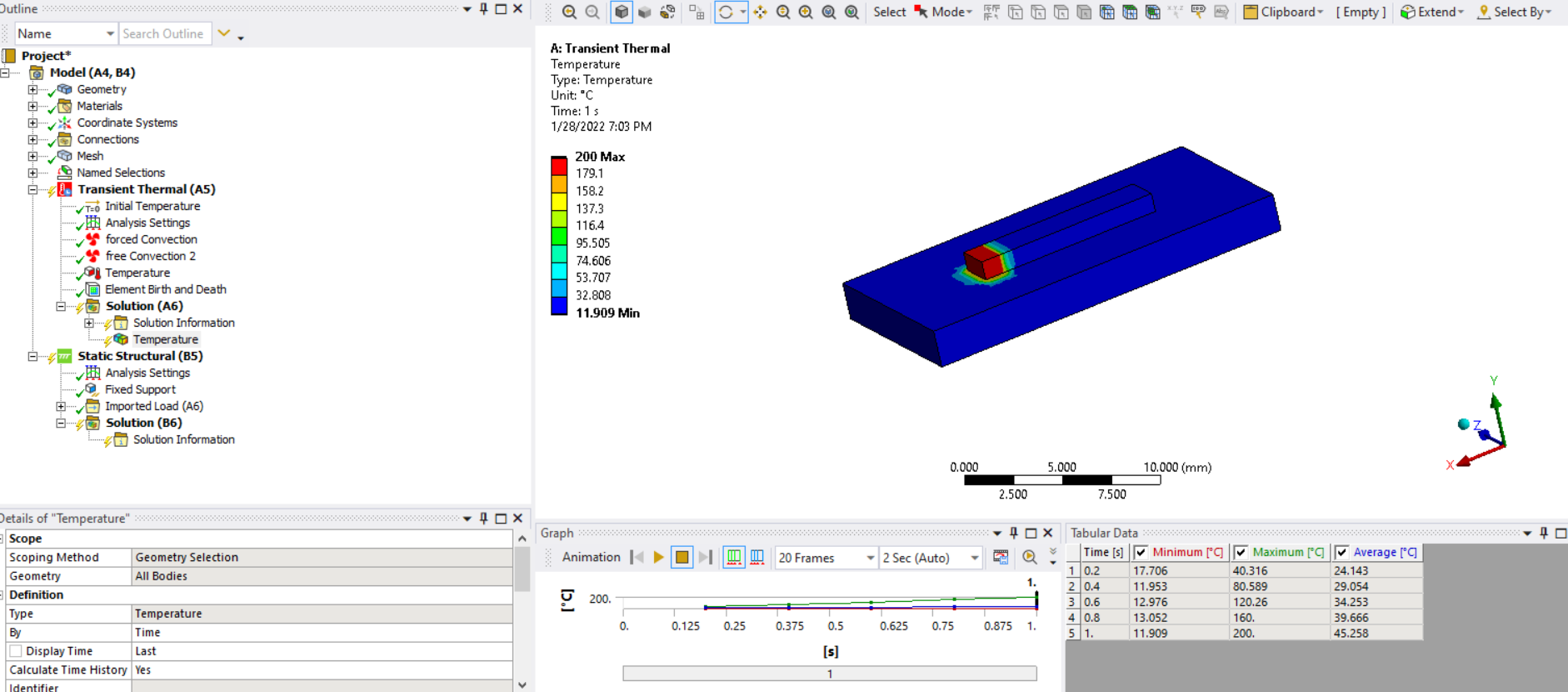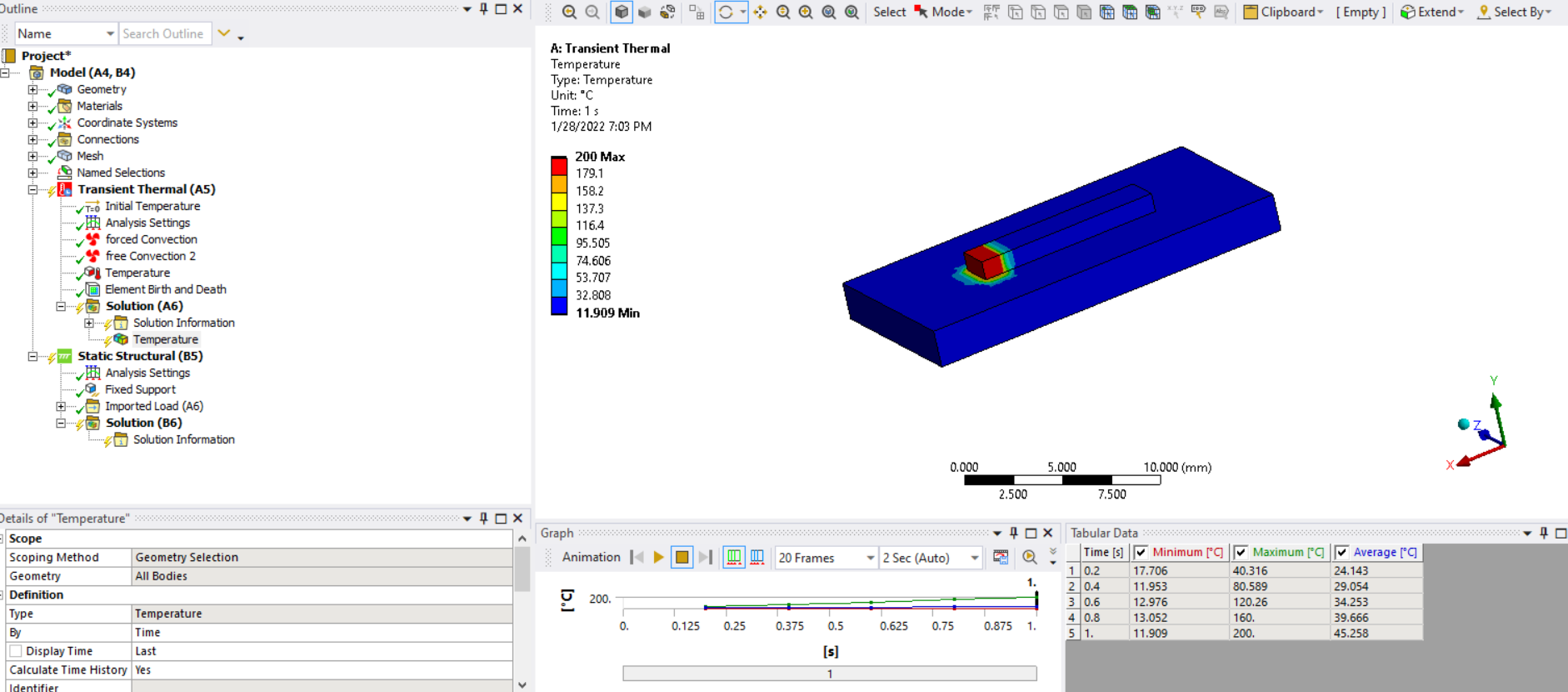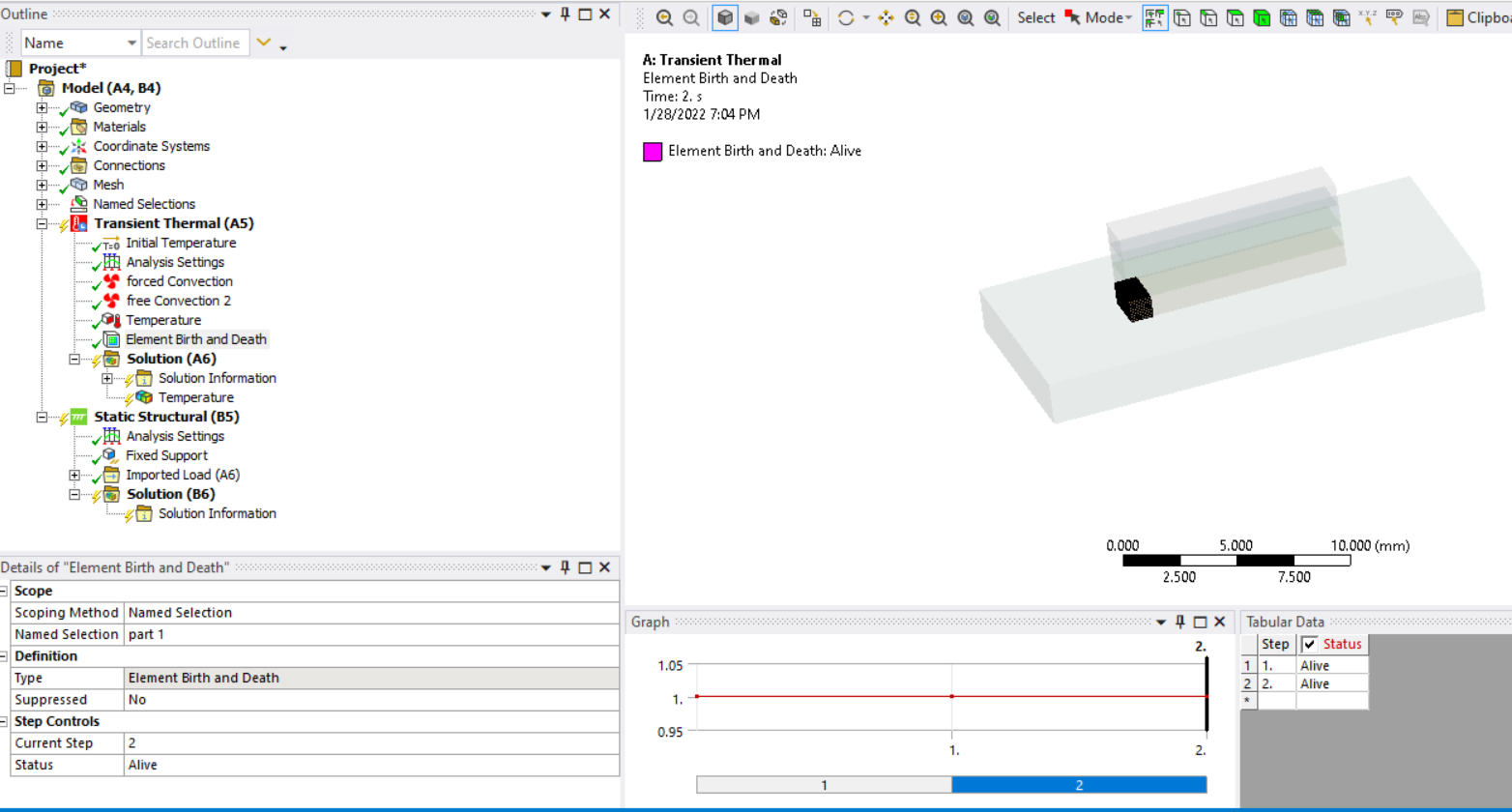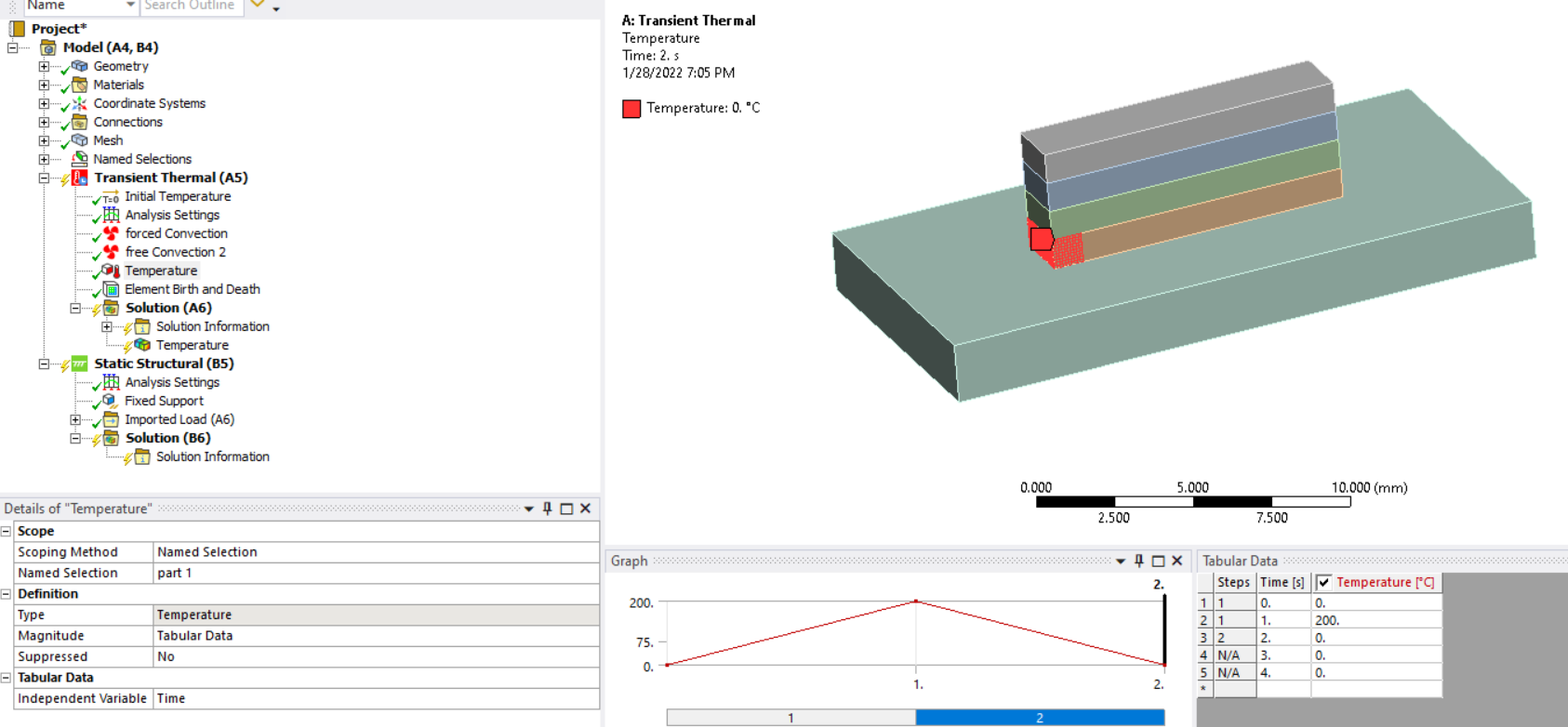-
-
January 29, 2022 at 12:06 am
mkalel
SubscriberJanuary 31, 2022 at 1:17 pmFebruary 1, 2022 at 12:58 pmAshish Khemka
Forum Moderator
Following are the answer to your queries:
The bonded contact created at the interface should take care of the thermal contact.
For element birth and death please refer to the following link: Element Birth and Death (ansys.com)
If you know that the filament will be at 200 degree Celcius then use temperature boundary condition on the faces. If you know the internal heat generation (W/m^3) then use the same.
For end step time - you will have to decide the same. It can be the phase till which you expect the temperature to vary.
/6. /7. - Please see if the following link helps: Thermal Capacitance in Heat Transfer | Ansys Innovation Courses
Regards Ashish Khemka
February 1, 2022 at 11:56 pmmkalel
SubscriberHello Ashish First of all, thank you very much for your time and help in answering my question.
Should I need to change the type of the contact (bonded, frictionless, or something ) or will it work as a default contact?
For Element birth and death I was wondering if I can use it manually from the "option"[insert>element birth and death] to avoid the coding part as I had in the tree (I am new to coding).
For number 3, I didn't understand if I should use both temperatures on the face and insert Internal heat generation? Do you mean after adding temperature do I need to do the internal heat generation on the part as well? Because all I know is the filament coming from the nozzle has 200C and the filament eventually going to be a part so I was little confused about it.
I have shared a Youtube video of the 3D printing simulation. I know they have used a lot of APDL on this. Is it possible to do it without coding? I mean manually from workbench
Besides these, This was just my concern. I was just wondering is it possible to create a virtual meeting or Q/A session with any ANSYS thermal expert like you to discuss my simulation and some sort of technique to solve these kinds of thermal simulations rather than waiting a whole day to get a reply on the question.
I would appreciate any kind of help from anybody on this
Thanks Mukesh Kalel
mkalel@student.ysu.edu
February 2, 2022 at 12:59 pmAshish Khemka
Forum Moderator
I see that you have created a duplicate post and will delete the same. On the queries you have:
Use bonded contact.
Yes, you can insert the element birth and death manually.
For filament, you know that the surface of filament is at a temperature of 200 degrees Centigrade then you should assign only a temperature to the faces.
The video attached looks like a moving heat source. You can try Moving heat flux ACT:
Ansys Store Moving Heat SourceV4.1 created by ANSYS Inc
Moving Heat Source ÔÇô Ansys Act Extension - SimuTech Group
For one on one support, you will need to create a Service Request (SR) - which is available for commercial customers with TECS. In case you are a commercial customer (with TECS) then please log an SR.
Regards Ashish Khemka
February 3, 2022 at 6:12 ammkalel
Subscriber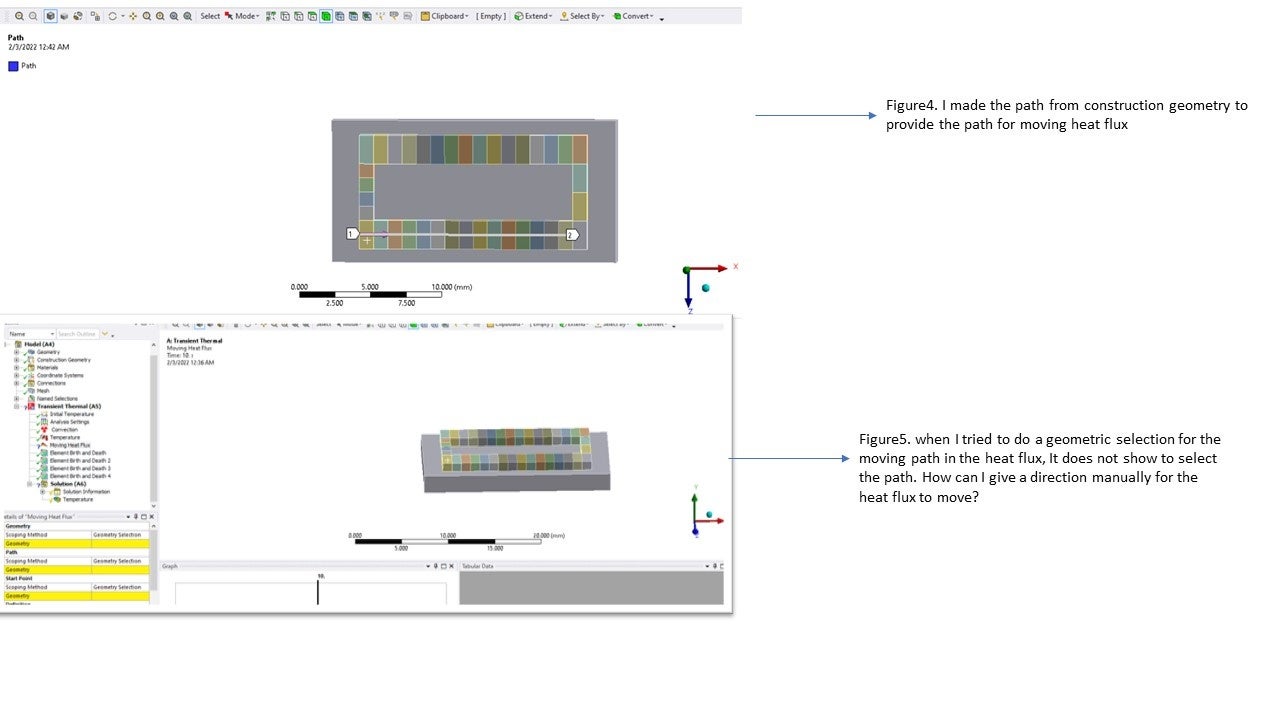
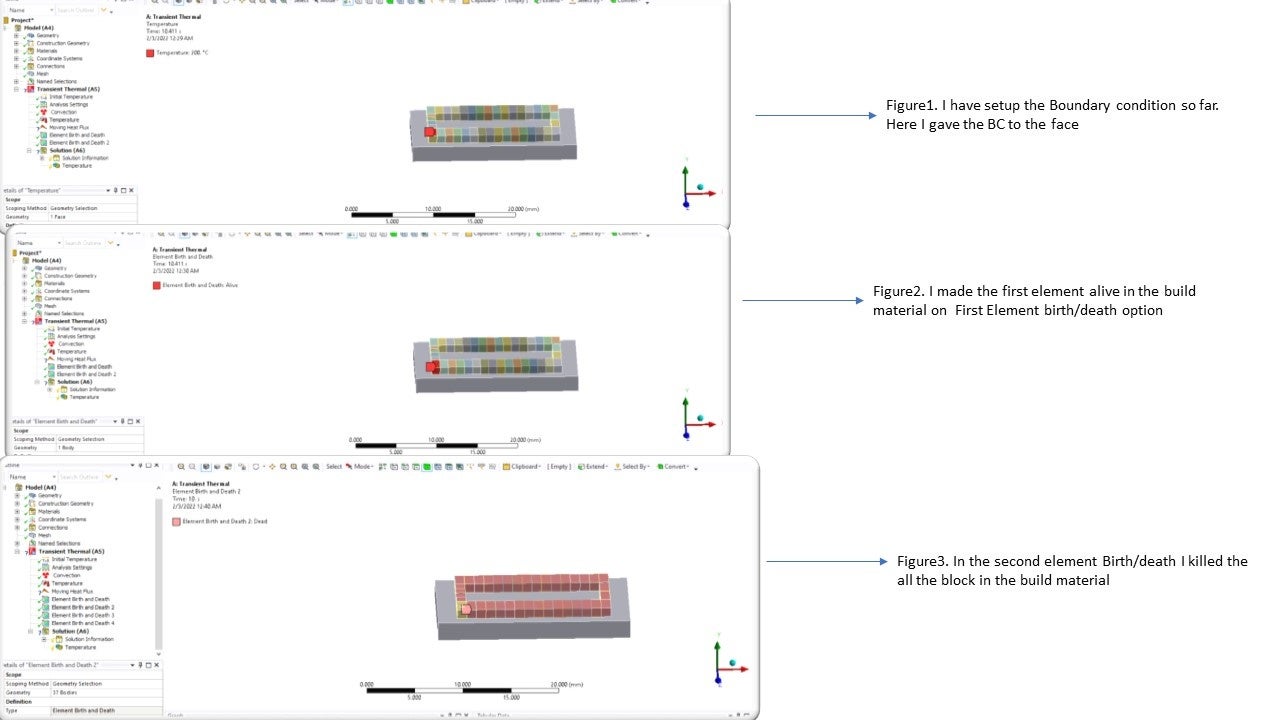 Thank you once again for your help.
Thank you once again for your help.
I have created a simple model to run a simulation with a almost 40 different block as a building material sitting on the the base. I have a shared a pic of it
I made it 40 different part because I felt easier to assign different BC separately. (especially when assigning Element Birth/Death). I was wondering if I can make a single block and separate them in 40 different pieces ( 40 diff named selection ) to give them BC separately. Is it possible ? if yes then how ?
Is there a option to make a loop manually for element Birth/death ? do I need to add separately for element birth and death option for separate element? From my guess I was think there is gonna be 80 Element Birth/death on the tree for 40 different blocks.
the rest of the information I have explained in the figure. Can you please have your comment my work if I am doing something wrong.
Appreciated your help Mukesh.
February 3, 2022 at 3:21 pmAshish Khemka
Forum Moderator
Did you get a chance to download and go through the Moving Heat ACT? It might be of use to you.
Ansys Tutorial - Moving Heat Source [Includes Cooling] - YouTube
Regards Ashish Khemka
February 3, 2022 at 3:36 pmmkalel
Subscriber
I already downloaded it and I have tried 4-5 tutorial about using heat flux. But the problem I am having with applying heat flux is the path and the starting coordinate. Usually, they had this joint section where they select as a path and but usually i have a block sitting next to each other side by side and when ever I tried to select a path. I don't find a way to setup it like i posted a pic below . I tried to construct a grometric path but it didn't work
 Thanks
mukesh
Thanks
mukesh
Viewing 7 reply threads- The topic ‘FDM 3d printing process (adding material with time and supplying temperature BC to the material.’ is closed to new replies.
Ansys Innovation SpaceTrending discussionsTop Contributors-
3597
-
1283
-
1107
-
1068
-
978
Top Rated Tags© 2025 Copyright ANSYS, Inc. All rights reserved.
Ansys does not support the usage of unauthorized Ansys software. Please visit www.ansys.com to obtain an official distribution.
-
The Ansys Learning Forum is a public forum. You are prohibited from providing (i) information that is confidential to You, your employer, or any third party, (ii) Personal Data or individually identifiable health information, (iii) any information that is U.S. Government Classified, Controlled Unclassified Information, International Traffic in Arms Regulators (ITAR) or Export Administration Regulators (EAR) controlled or otherwise have been determined by the United States Government or by a foreign government to require protection against unauthorized disclosure for reasons of national security, or (iv) topics or information restricted by the People's Republic of China data protection and privacy laws.

